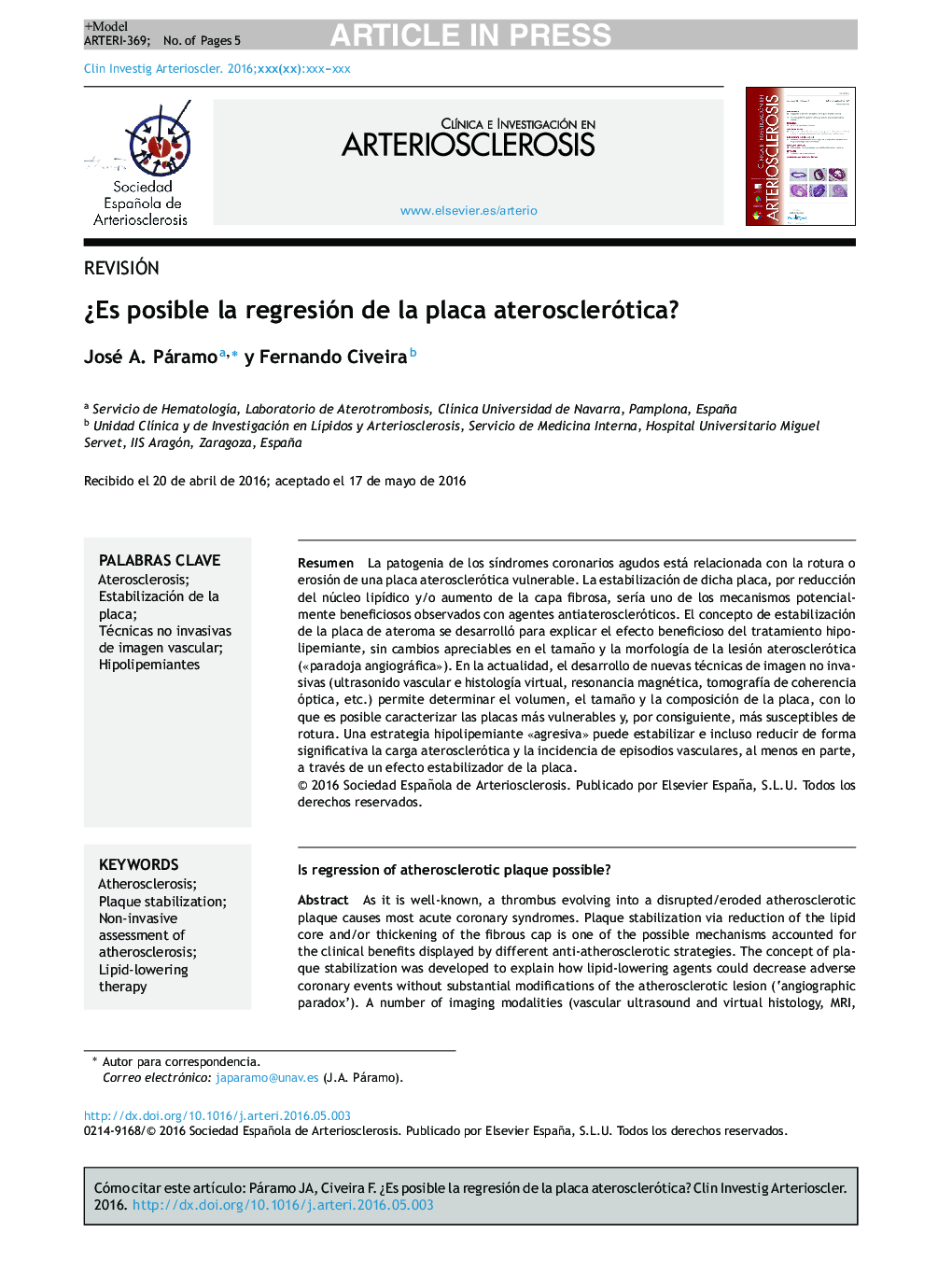| Article ID | Journal | Published Year | Pages | File Type |
|---|---|---|---|---|
| 5593044 | Clínica e Investigación en Arteriosclerosis | 2017 | 5 Pages |
Abstract
As it is well-known, a thrombus evolving into a disrupted/eroded atherosclerotic plaque causes most acute coronary syndromes. Plaque stabilization via reduction of the lipid core and/or thickening of the fibrous cap is one of the possible mechanisms accounted for the clinical benefits displayed by different anti-atherosclerotic strategies. The concept of plaque stabilization was developed to explain how lipid-lowering agents could decrease adverse coronary events without substantial modifications of the atherosclerotic lesion ('angiographic paradox'). A number of imaging modalities (vascular ultrasound and virtual histology, MRI, optical coherence tomography, positron tomography, etc.) are used for non-invasive assessment of atherosclerosis; most of them can identify plaque volume and composition beyond lumen stenosis. An 'aggressive' lipid-lowering strategy is able to reduce the plaque burden and the incidence of cardiovascular events; this may be attributable, at least in part, to plaque-stabilizing effects.
Related Topics
Life Sciences
Biochemistry, Genetics and Molecular Biology
Physiology
Authors
José A. Páramo, Fernando Civeira,
